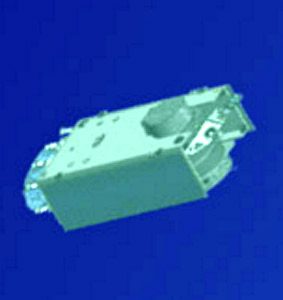
UrtheCast Corp. announced on August 14, 2017, that it has entered into a contract with a confidential customer for the development and delivery of a dual-frequency stand-alone Synthetic Aperture Radar (SAR) operational-class satellite as an “accelerator” for the OptiSARTM Constellation. The exact amount of the contract is not being disclosed at this time for confidentiality and competitive reasons, but Urthecast can confirm that it is a substantial contract worth in excess of one hundred million Canadian dollars. The contract is for the delivery of the SAR spacecraft, key elements of the ground segment, namely the mission control and planning system and the SAR processor, and in-orbit operations support, but does not include the price of the launch or insurance (which are the customer’s responsibilities). This confidential customer has previously signed an MOU with the Urthecast for the OptiSAR Constellation.
The contract is subject to the customer obtaining final government appropriation approval and to UrtheCast and its suppliers obtaining technology transfer export permits on terms agreeable to the customer. Subject to these conditions being met, work on the programme is anticipated to begin in early 2018, for launch in late 2020. Payments by the customer to UrtheCast under the contract are conditional on it successfully reaching various programme delivery milestones. As part of the deliverables under the contract, UrtheCast has also agreed to provide elements of the satellite ground segment and post-launch maintenance and operational support, each to be further detailed and extended in separate definitive contracts.
Using the same SAR technology that Urthecast has been developing for the OptiSAR constellation, this contract will allow UrtheCast to accelerate both the operationalization of its SAR technology and the start of its SAR data services business. The contract enables Urthecast to build and launch a SAR satellite as a precursor mission (or “accelerator”) to the OptiSAR Constellation and to thereby demonstrate its high-capacity, high-throughput, fully-operational class capability with an unprecedented range of imaging modes and scientific-grade data quality. Under the contract, the parties have agreed to enter into a separate definitive contract to provide UrtheCast with the exclusive commercial distribution rights to the customer’s unused satellite imaging capacity outside specified regions on a shared 50/50 net revenue basis, allowing Urthecast to sell the SAR-XL data and SAR-derived services in advance of the deployment of the OptiSAR constellation—the date of which is now pushed out by at least a year.
“This contract is a big win and a huge opportunity for us,” stated UrtheCast’s President and CEO, Wade Larson. “The execution of the accelerator program will demonstrate to prospective OptiSAR customers that the technology is build-ready and give them the confidence that we are able to carry out programmes of this scale. Building and delivering this accelerator SAR satellite will validate our technology, substantially reduce our financial, programmatic and operational risks, and get us into the business of selling SAR-XL data sooner than we were anticipating. Subject to final approvals, we’ll soon be customer-funded to build our first operational-class SAR mission.”
As previously disclosed, UrtheCast believes its SAR technology, for which it has filed multiple patents, will be the world’s first 5th Generation space-borne SAR technology. Both multi-frequency and fully-digital, Urthecast’s SAR technology allows for significant operational flexibility. With six independent apertures, the accelerator SAR satellite is expected to be the first SAR satellite ever to fly more than two independent apertures. Having six apertures will provide several advantages over existing systems, including improved data quality and spotlight-class higher resolution in full stripmap mode, which enables significantly more coverage capability at high resolution than is currently commercially available.
Urthecast today is also disclosing that the OptiSAR technology, which is now in its third design iteration, could be configured in future missions to image simultaneously in three bands (for example, X, S, and L), which is believed to be another world’s-first achievement and is covered in its patent filings.
Funding for the development of UrtheCast’s SAR technology has to date come from its own funds and from customers, including the Government of Canada: the Canadian Space Agency (CSA), the Department of National Defence (DND), and Innovation, Science and Economic Development Canada (ISED).
Original published at: https://spacewatch.global/2017/08/urthecast-announces-signing-contract-sar-xl-satellite-optisar-constellation/
 SpaceWatch.Global An independent perspective on space
SpaceWatch.Global An independent perspective on space

